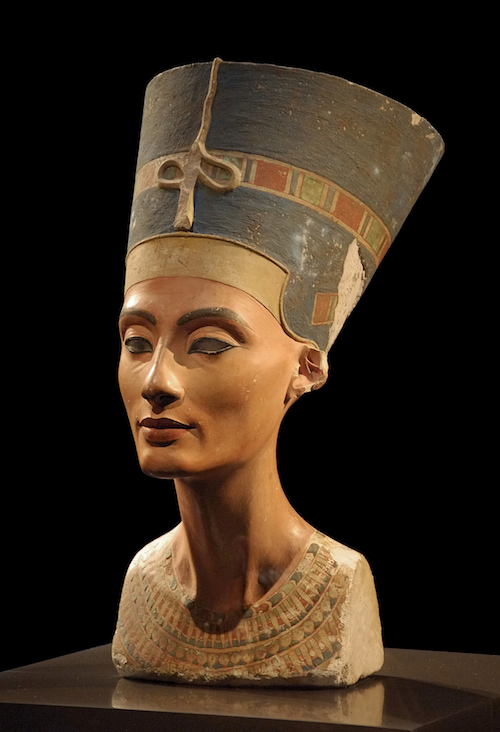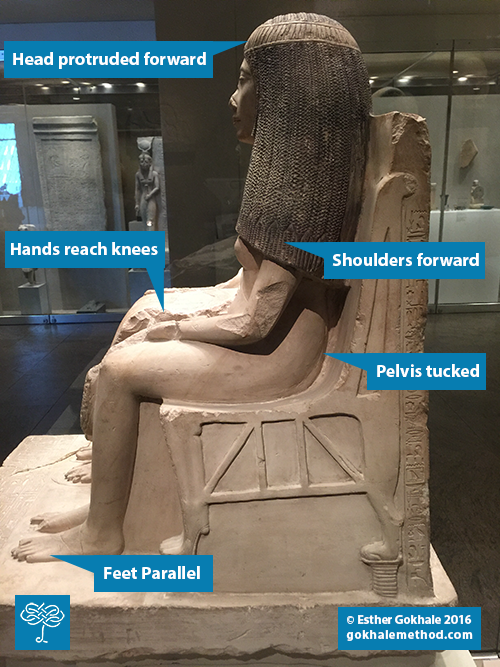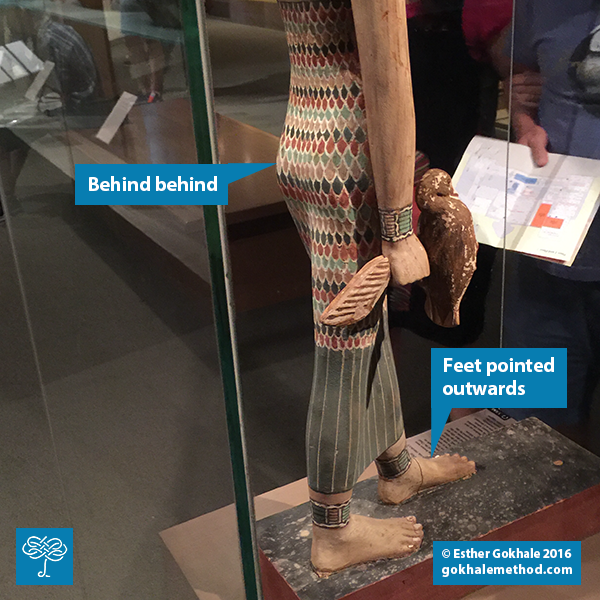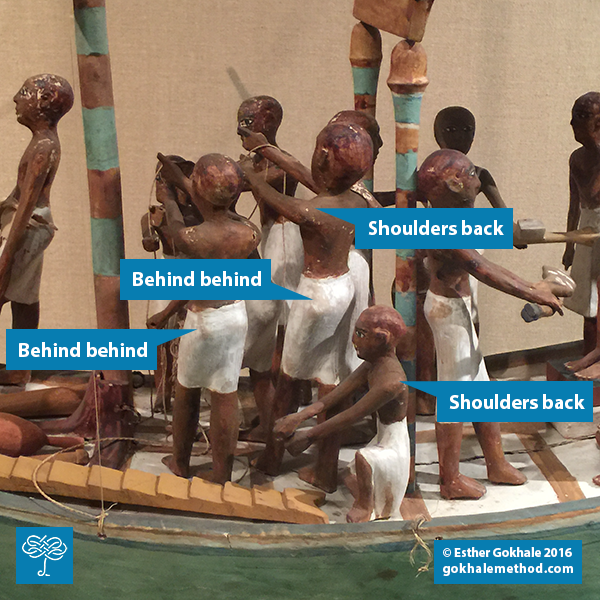Posture Differences in Elite and Plebeian Ancient Egyptians

This famous bust of Nefertiti (c. 1370 – c. 1330 BC) exhibits a forward-protruded head. Original image courtesy Wikipedia user Philip Pikart under CC-BY-SA 3.0.
In my travels, I enjoy visiting museums. In a concentrated space and in a short few hours, I am able to travel back in time and over large distances, and compare people from different cultures. What a remarkable gift from the craftspeople of the past!
Many museums have a well-developed Egyptian collection. The Egyptians’ expertise in preserving their dead as well as the dry Egyptian climate has yielded a bounty of specimens from the distant past. Egyptian artifacts are often spectacular and modern audiences are drawn to Egyptian mummies, pyramids, thrones, and temples. So we get to enjoy glimpses into ancient Egypt remarkably easily.
Most people from the past, as evidenced by ancient art and sculpture, had excellent posture and musculoskeletal health. The pharaohs and upper crust of ancient Egypt, however, stand out as exceptions. Sitting on their thrones or standing in special ceremonies, they almost always have tucked pelvises and forward-protruding heads. Nefertiti (as seen above) is an example of an Egyptian royal who has her head “parked” extremely forward. Correspondingly, examinations of the mummified remains of pharaohs report advanced arthritis in the joints — much like what we find in modern populations.

Renenutet (shown here) and her husband Runy were part of Egyptian nobility in the reign of Seti I (1294 - 1279 BC). They served in local temples. Notice her tucked pelvis and protruded head and shoulders that are similar to problematic modern posture.

This relief from the 18th dynasty (c. 1335 BC) shows a royal couple (possibly Akhenaten and Nefertiti) in a garden. Notice their posture shows similar distortions to those we see in modern times: tucked pelvis, locked knees, lack of abdominal tone, and forward-protruded head. Original image courtesy Andreas Praefcke on Wikipedia.
By contrast, carvings and sculptures of Egyptian laborers — carrying palanquins, rowing ceremonial boats, and doing other manual work — have beautiful and healthy posture. They model an anteverted pelvis, erect spine, and vertical neck similar to those seen in non-industrial cultures the world over.

This funerary offering bearer (c. 1980 BC) shows excellent posture: a J-spine with anteverted pelvis and elongated spine, and posterior shoulders.

This close-up of the funerary offering bearer above shows her feet pointed slightly outwards and the placement of her behind behind her.

The workers on this funeral boat show excellent posture as they transport coffins in Ancient Egypt (c. 1980 BC).

This ancient Egyptian worker exhibits a perfect hip-hinge with shoulders remaining back.
What are we observing here? What made the pharaohs suffer the same poor musculoskeletal health we do? Was it affluence? Was it a departure from a working-class lifestyle? Was it a sedentary lifestyle? Was it fashion?
If you live in a large city, you almost certainly have access to a collection of Egyptian art. The next time you visit the collection, please tell us about your observations. Or take a few photos and post or send them to us so we can comment on them.

Comments
I am in Aswan, Egypt, right
I am in Aswan, Egypt, right now and was very happy to see your artcle. Having taken your course, I immediately noticed that the depictions here of the Egyption gods and rulers show TERRIBLE posture. It is true that the local people working in the fields have better posture.
How wonderful to spend time
How wonderful to spend time in Egypt! If you happen to have your camera when you next visit the local fields, please consider documenting some of what you see. I have no idea what sort of shape modern Egyptians are in and would be very glad to see you pictures.
I'm ready to beat that the
I'm ready to beat that the first dinasties haved have a good posture, and you can find a "decadence in posture", like in other aspects during the generetions...
O' sensei, Morihei Ueshiba, the founder of Aikido was used to say that posture reflects your mental state.
Not phisical or economic, just your mental state, the mental imbalance is in the decadence time (like the time we are living in), the "normality".
Maybe a life "down to earth" have preserved the poor people of ancient Egypt to develop the some mental imbalance of the rulers, for some time.
Where the human being lives a basic life, like in some places of Africa or Sud America today, you will see good posture.
Where the human being lives an evolved life, i mean by the prospective of soul, like in some cases (take for example Ueshiba, Osho or our dear Esther) you will see a good posture.
In the states beetween the two, the "work in progress" creates a little zig zag in the spine here and there.
Placing consciousness on your spine and align it with dedication and love is what Esther teaches and it is fantastic:
it creates health and good condions for your evolution!
Recent research does indeed
Recent research does indeed show that there are correlations between mental / emotional state and posture, but I believe it's important to not take this too far. Mental state is just one factor of many. As for my posture, it's a work in progress. For the final step, I'm counting on everyone around me improving themselves and beaming it out to me...
Thank you, Esther, to
Thank you, Esther, to remember me the value of moderation, you'r a good guide for me!
Add New Comment
Login to add commment
Login